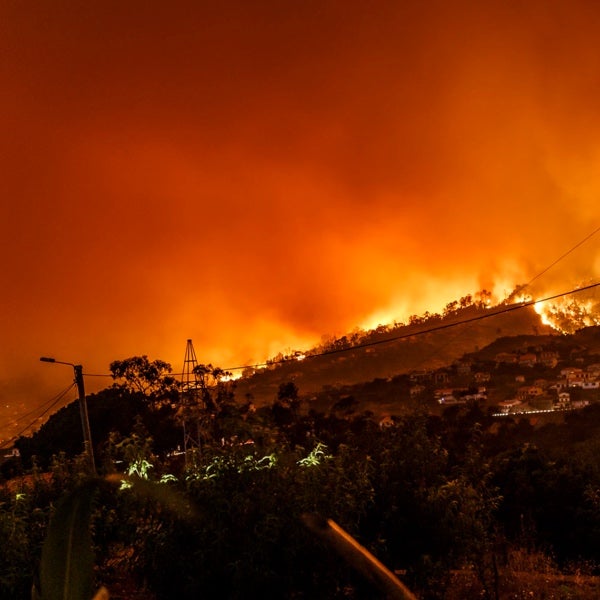Wildfires in California have caused over US$70 billion in insured losses (Moody's 2023 inflation-adjusted) from 40 major wildfires over the past decade, with Northern California attributing more than 90 percent of the total insured wildfire losses in the last five to ten years.
Placing a financial strain on the insurance industry, and immense pressure on California insurers, during this period, for every dollar received in premiums, insurers paid out US$1.08, reflecting a 108 percent loss ratio.
As a result, several of California's leading property insurers have restricted coverage or halted new home insurance applications in response to stressors attributed to a changing climate, increased development in fire-prone territories, and escalating reconstruction costs due to inflation.
Wildfire insurance coverage struggles to evolve as strict regulatory frameworks have hindered or inhibited using risk analytics tools such as catastrophe wildfire models in the rate-making process when risk management strategies need urgent reassessment.
When private insurers withdraw coverage, insurers of last resort such as the California FAIR Plan see a surge in residual insurance market policies, with policy counts increasing by six times since 2018, reaching approximately 370,000 policies in force today.
As a program financially supported by admitted carriers licensed to write insurance in California, the FAIR Plan represents a collective effort to provide a safety net for homeowners in high-risk areas. However, the sustainability of the FAIR Plan is under scrutiny.
It recently issued a warning that should a major catastrophic wildfire occur, it may need to impose an assessment on all carriers in the state.
This situation potentially mirrors a precedent set in 1996, when the FAIR Plan had to assess US$260 million on carriers, at a time when the plan’s total exposure was only around US$22 billion, less than 10 percent of the total exposure of US$311 billion as of December 2023.
A Step Towards a More Resilient Wildfire Insurance Landscape
The landscape of property and casualty insurance in California is on the brink of transformative change with a new proposal from the State's insurance regulator.
The proposed California Department of Insurance (CDI) regulatory changes will allow wildfire catastrophe models to be used to develop loss costs used in rate filings and establish a transparent model review process.
This proposal from the CDI marks a pivotal shift from the traditional methodologies mandated by Proposition 103, passed in 1988, which introduced three critical stipulations:
- Any proposal for rate increases exceeding seven percent may trigger a public hearing, prolonging the process of adjusting premium rates.
- Calculations for property insurance catastrophe premiums must draw on at least 20 years of historical claims data.
- The framework does not allow for the inclusion of reinsurance costs in the rate-setting calculations, overlooking a significant expense factor for insurers.
Initially, these regulations presented manageable challenges, but in this fast-evolving market landscape, current risk factors have proven these inadequate in the face of escalating wildfire risks and turned regulations into notable obstacles for insurers.
As part of the state regulator’s Sustainable Insurance Strategy aimed at modernizing the insurance sector, quantifying the magnitude of the wildfire insurance problem is crucial for the California Department of Insurance (CDI) to develop effective solutions.
This realization underpins the regulator's move towards a sustainable insurance strategy, so insurers can navigate the complexities of today's risk landscape, as the past decade's surge in insured losses from major fires underscores the immediate need for more advanced risk models.
Adopting a scientifically robust and equitable methodology, California will set a new standard in transparency when assessing and mitigating wildfire risks.
This pioneering effort of integrating advanced catastrophe modeling into its framework holds promise for California and offers valuable learnings and a potential blueprint for other regions grappling with similar challenges.
A journey towards a more resilient insurance market in California underscores the critical role of innovation and collaboration among regulators, insurers, and the scientific community.
By harnessing the power of advanced modeling techniques, California is also laying the groundwork for a more sustainable and equitable approach to insurance in the face of natural disasters, including wildfires.
Enhancing Wildfire Risk Assessment with Moody’s RMS U.S. Wildfire HD Version 2.0 Model
The forthcoming Moody's RMS U.S. Wildfire HD Version 2.0 Model will mark a significant advancement in the field of wildfire risk assessment. The updated model leverages the latest fuel and climate data with a more accurate depiction of current wildfire risks.
It uniquely accounts for the impacts of multi-year droughts and incorporates loss experiences up to 2023, ensuring a comprehensive calibration across the entire modeled domain.
This approach significantly improves understanding of wildfire behavior and risk and the interplay between factors including climate change and land management practices.
A standout feature of the U.S. Wildfire HD Version 2.0 Model is the capability to evaluate the effectiveness of mitigation strategies in real-time such as mechanical thinning together with community and property level mitigation.
The model benefits from Moody's partnership and insights from the Insurance Institute for Business & Home Safety (IBHS) Wildfire Prepared Home and Community programs.
It also offers detailed insights into property-level mitigations that align with the U.S. Department of Insurance (DOI) standards.
Instrumental in supporting community risk reduction strategies and enhancing user-defined hazard analysis are features like the Urban Conflagration ON/OFF switch; moreover, the model takes a comprehensive approach to risk assessment by explicitly identifying utility-related ignitions, which have contributed to roughly 50 percent of wildfire losses in California.
The utility portion of the model reflects the impacts of millions of dollars spent in recent years on network hardening and wildfire risk reduction measures by major utility companies.
This addition underscores the model's holistic view of the interplay between increasing wildfire risk due to climate change and risk reduction due to mitigation efforts by utilities.
The Moody’s RMS Version 2.0 Model enables robust quantification of tail risk through modeling 100,000 simulation years and expanding coverage to include Hawaii, in response to market demand following the unprecedented disaster in Lahaina in 2023.
Set to redefine wildfire risk modeling, the Version 2.0 model will offer invaluable insights for a broad spectrum of stakeholders. This includes (re)insurers, utilities, forest services, and government agencies, facilitating more informed decisions in rate setting, re/insurance pricing, portfolio management, and risk quantification.
With its advanced functionality, the model will equip stakeholders with the necessary solutions to navigate the complexities of evolving wildfire risk.
Find out more about Moody's RMS wildfire models here.







